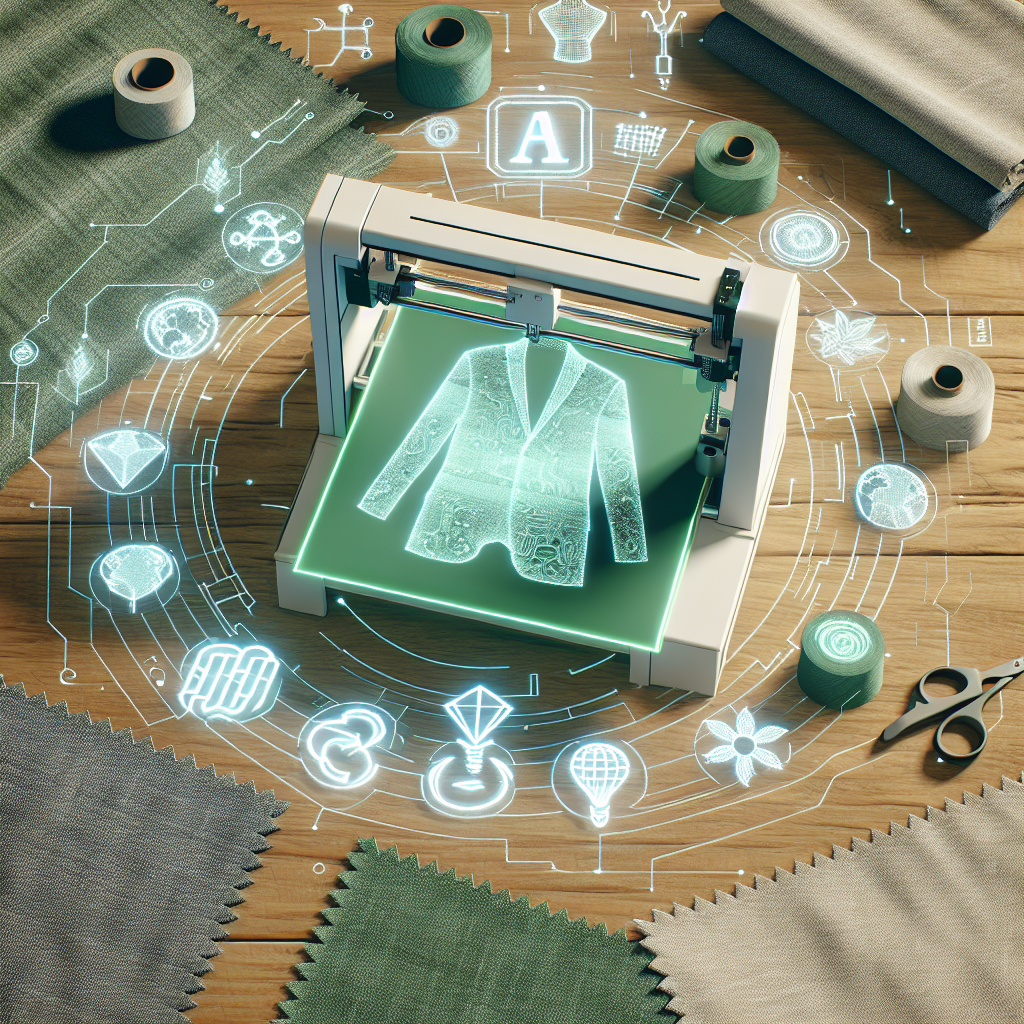The fashion industry is one of the largest contributors to environmental pollution and waste. From the excessive use of water in production to the disposal of clothing in landfills, the industry is in dire need of sustainable solutions. Two emerging technologies, artificial intelligence (AI) and 3D printing, are revolutionizing the way fashion is produced, offering a more sustainable and efficient alternative to traditional manufacturing methods.
AI in Fashion Production:
Artificial intelligence has the ability to streamline the entire fashion production process, from design to distribution. By analyzing data and predicting trends, AI can help designers create more targeted and sustainable collections. For example, AI algorithms can analyze social media trends and consumer behavior to identify popular styles and colors, allowing designers to create collections that are more likely to sell.
AI can also optimize the production process by predicting demand and adjusting production accordingly. This can help reduce overproduction and waste, leading to a more sustainable supply chain. Additionally, AI can improve the efficiency of manufacturing processes by identifying areas for improvement and automating tasks that would otherwise be time-consuming and labor-intensive.
One of the most exciting applications of AI in fashion production is the use of generative design. Generative design is a process in which AI algorithms are used to create complex designs that are optimized for specific criteria, such as sustainability and material efficiency. This can result in designs that are not only visually appealing but also environmentally friendly.
3D Printing in Fashion Production:
3D printing, also known as additive manufacturing, is a process in which a three-dimensional object is created by layering materials on top of each other. In the fashion industry, 3D printing is being used to create clothing and accessories in a more sustainable and personalized way.
One of the main advantages of 3D printing in fashion production is the ability to create complex and intricate designs that would be difficult or impossible to produce using traditional manufacturing methods. This allows designers to push the boundaries of creativity and create unique and innovative pieces that are tailored to individual preferences.
Additionally, 3D printing can significantly reduce waste in the production process. Traditional manufacturing methods often result in excess material being cut away from the final product, leading to waste that ends up in landfills. With 3D printing, only the necessary amount of material is used, reducing waste and minimizing the environmental impact of production.
Another benefit of 3D printing in fashion production is the ability to create custom-made clothing and accessories. By using 3D scanning technology, designers can create garments that are tailored to the exact measurements of the wearer, resulting in a better fit and increased comfort. This personalized approach to fashion production can also help reduce the amount of clothing that is discarded due to poor fit.
The Future of Sustainable Fashion Production:
The combination of AI and 3D printing has the potential to revolutionize the fashion industry and make it more sustainable and efficient. By leveraging the power of AI to analyze data and predict trends, designers can create collections that are more targeted and less likely to lead to overproduction. Additionally, AI can optimize the production process and identify areas for improvement, leading to a more sustainable supply chain.
3D printing offers a more sustainable alternative to traditional manufacturing methods, allowing designers to create intricate designs with minimal waste. The ability to create custom-made clothing and accessories also reduces the likelihood of clothing being discarded due to poor fit, further reducing waste in the industry.
By combining AI and 3D printing, designers can create innovative and sustainable fashion collections that cater to the individual preferences of consumers. This personalized approach to fashion production can help reduce waste, minimize the environmental impact of production, and create a more sustainable future for the industry.
FAQs:
Q: How does AI help designers create sustainable fashion collections?
A: AI can analyze data and predict trends to help designers create collections that are more targeted and less likely to lead to overproduction. By identifying popular styles and colors, designers can create collections that are more likely to sell, reducing waste in the production process.
Q: How does 3D printing reduce waste in fashion production?
A: 3D printing allows designers to create clothing and accessories with minimal waste, as only the necessary amount of material is used. Traditional manufacturing methods often result in excess material being cut away from the final product, leading to waste that ends up in landfills.
Q: Can 3D printing be used to create custom-made clothing?
A: Yes, 3D printing can be used to create custom-made clothing and accessories. By using 3D scanning technology, designers can create garments that are tailored to the exact measurements of the wearer, resulting in a better fit and increased comfort.
Q: How can AI optimize the production process in the fashion industry?
A: AI can optimize the production process by predicting demand and adjusting production accordingly. This can help reduce overproduction and waste, leading to a more sustainable supply chain. Additionally, AI can identify areas for improvement and automate tasks that would otherwise be time-consuming and labor-intensive.

